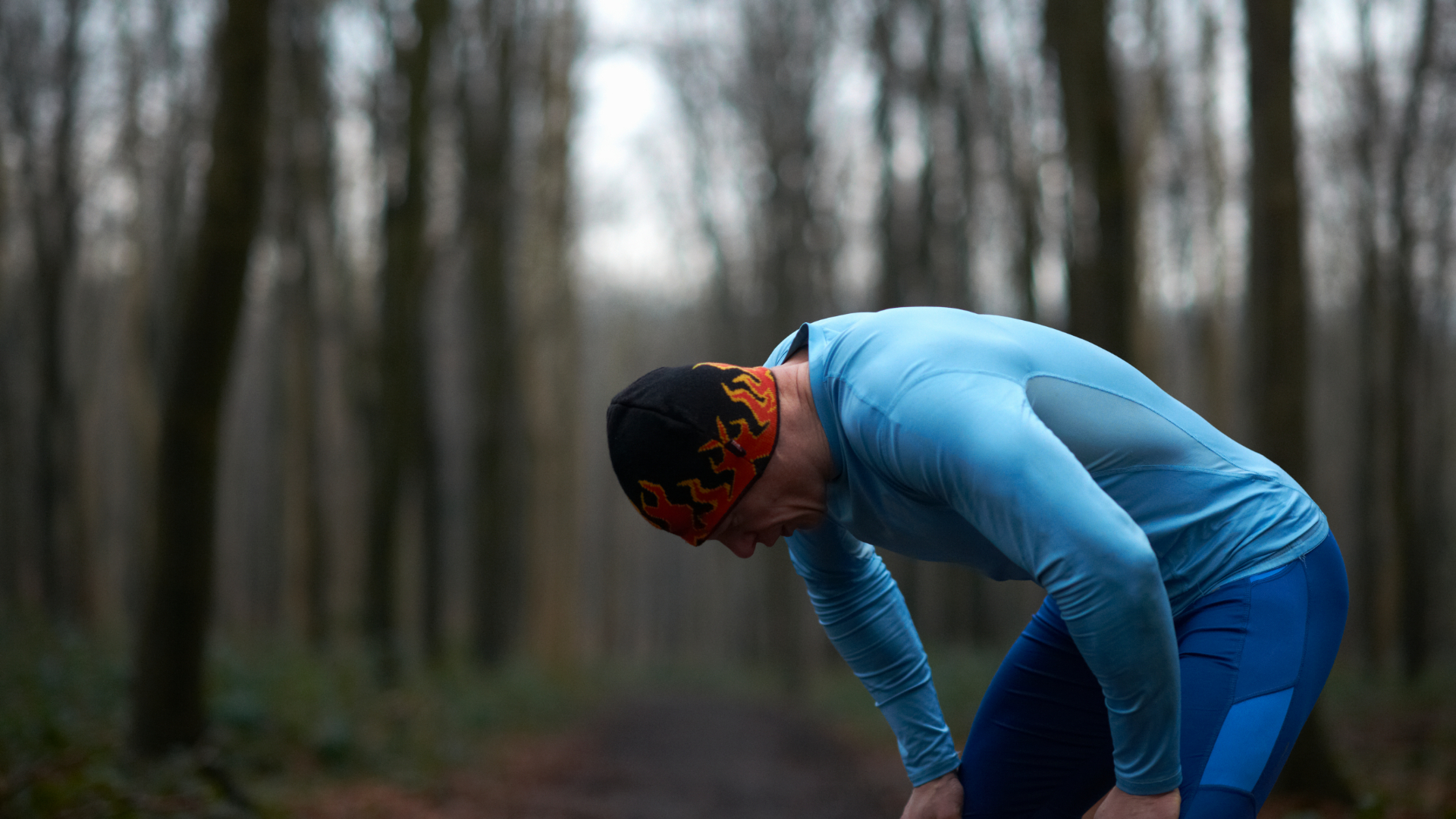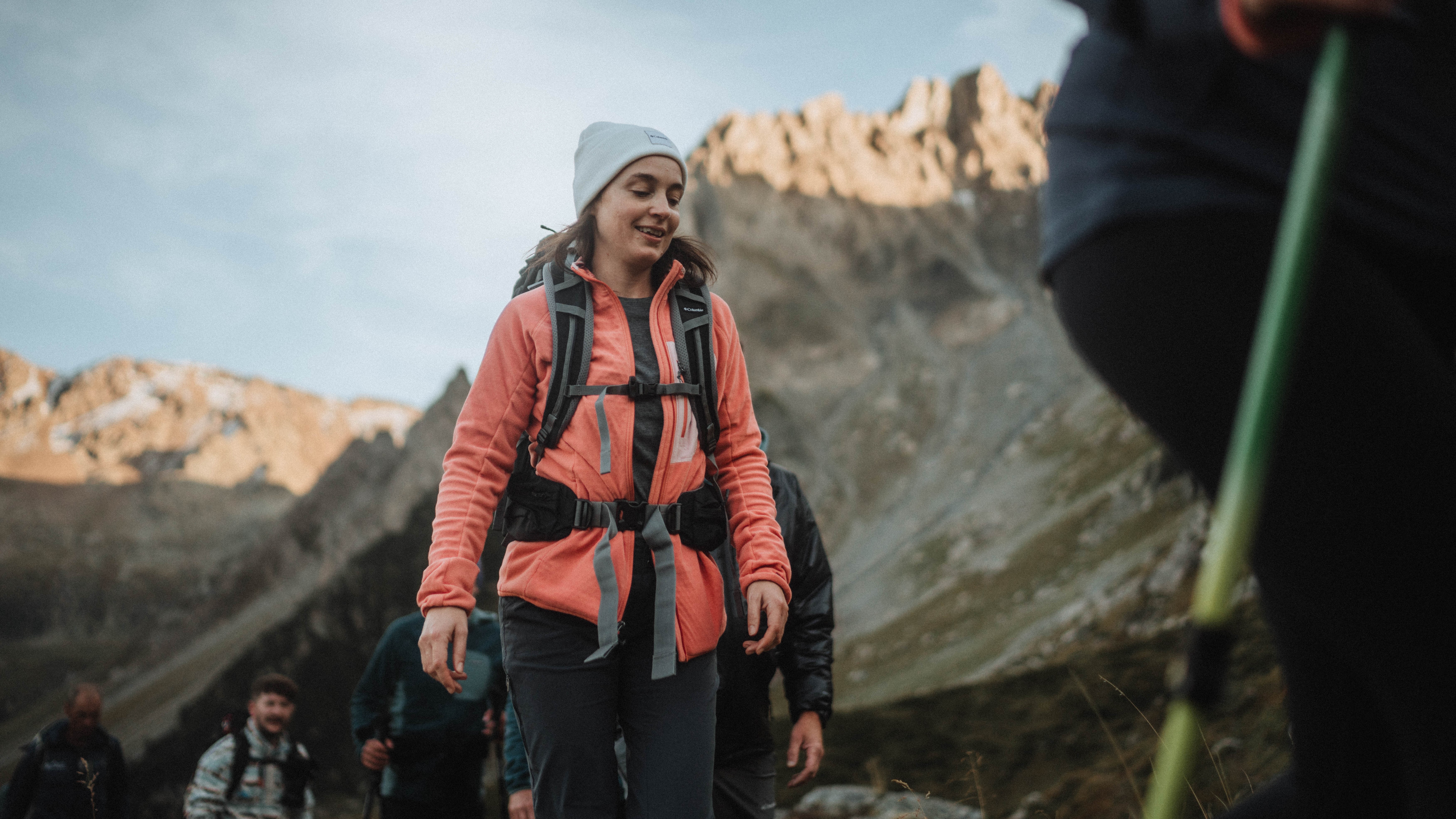Have you been walking all wrong? Discover joy and comfort on the trail
We speak to Walkactive founder Joanna Hall about what we might be getting wrong when we walk, and how to do it better

Picture the scene: you wake up before dawn as it’s an hour and a half drive to the trailhead to tick off a peak that’s been on your list. You park, hop out the car and start lacing up your hiking boots, aware you’re a little stiff from the drive but no worries – a good brisk walk in the bracing morning air will sort that out in no time.
You load up your backpack laden with provisions for every possible scenario, from your waterproof jacket to sunglasses, then set off down the trail. Quickly, the stope gets steep and you hunch forward, leaning into the hill to try not to slow to a dawdle. Soon enough, you're huffing and puffing, your low back is a bit achy and you’re wondering what you’re doing wrong?
The answer to that question is something that fitness expert Joanna Hall has spent 25 years working on. She’s the author of the book Walkactive Programme and with a master’s degree in Sports Science, she has a lot to say about what she calls the “effective walking technique.”
“Whilst walking is a fundamental part of everything that we do, the nature of our lifestyle means that whilst we may go out and put one foot in front of the other with good intentions to catch up with friends, walk for health or take advantage of wonderful outdoors, very often our technique recruitment is suboptimal,” she says.

Largely, that suboptimal walking technique – which can look like over-reliance on your hip flexors to step forward and rounding your back to try to go faster – comes as the result of the amount of time we all spend sitting down in chairs, where the front of your body is contracted and the back of your body is lengthened. This results in tight hip flexor muscles and ankles which can cause us to fundamentally change how we walk, and that can spell bad news for our bodies and health.
“What that means is that we're not going to optimize the benefits that we can get from our walk, whether that's for our posture, for our joint care and looking after our joints and that could be knee issues, that could be lower back discomfort, and it could actually just be struggling to actually get a good walking pace going.”
Why do I feel like I'm not walking properly?
If you regularly experience discomfort in your knees and lower back during or after a walk, Hall says it could be indicative that you’re relying on your anterior muscles and foregoing the power of posterior chain muscles like your glutes and hamstrings. The ramifications of all this can extend beyond imbalance in your musculoskeletal system.
All the latest inspiration, tips and guides to help you plan your next Advnture!
“When we're outside and we are leaning into a hill, our posture is compromised. That means our breath can very often become shorter than it needs to.”
She explains that the diaphragm – the parachute-shaped muscle at the bottom of your rib cage that’s the chief muscle involved in respiration – can move about 10 centimeters (four inches) but when you round forward to counter the weight of a heavy backpack, take on a steep slope or simply because you’ve been sitting down all day, you can reduce the mobility of your diaphragm by three to four centimeters, or a third of its capacity.

As you might have already learned the hard way, when you’re moving and not breathing properly, you might experience lightheadedness, muscle cramps and may find that it’s difficult to pick up or even sustain a good pace.
In short, sitting for long periods may have allowed humans to get to work inventing things to make us walk more, like GPS watches, but it doesn’t translate into proper walking. The more of it we do, the more attention we probably need to pay to how we are walking, otherwise it can become surprisingly difficult.
Of course, walking doesn’t just get you from A to B; it’s one of the top activities recommended by health experts to reduce your risk of chronic disease, manage blood pressure, reduce stress and improve your energy levels, which are just some of the benefits listed by the Mayo Clinic.
Learning to walk
I recently followed Hall’s Walk Active program, a coaching app based on her book. Starting with the fundamentals program, which entails 10 minute daily coaching sessions, I went out for short daily walks where I focused first on my feet, then hips, my head position and finally the movement of my arms.
I have a history of re-learning how to walk, having had a couple of knee surgeries that left me on crutches for months at a time, so I’m mindful about my technique, but I’m also aware that as a writer I spend a lot of time sitting. When I do go hiking, I know I might be relying on some of those movement patterns she’s identified as deficient.

The coaching program offers a simple but practical approach to walking – things like paying attention to how my foot strikes the ground, rolling through from mid heel to toes and pushing off the back foot to recruit my glutes and hamstrings. I can feel this action powering me forward rather than trying to pull myself uphill.
When I get to the section on hips, I’m invited to use my spinal extensors more to lift up and out of my hips and can tell this is a movement I’ve been slightly neglecting. Then it’s a case of drawing up through the crown of my head, something I do a lot of in yoga, and letting my arms swing naturally by my sides. Already, I’m feeling that my walking is more effortless and, dare I say, pleasant.
Hall likens the approach to breaking down a tennis serve where you focus on the individual skills of tossing the ball up, swinging the racquet then following through – breaking the movement down into its individual components helps you perform better, but it also helps you enjoy the serve more.
“I think it really does give you an improvement in your movement quality. We have many clients who are early onset Parkinson's or have slightly arthritic hips and knees and learning Walkactive significantly improves that joy in walking and their comfort as well as obviously getting better benefits for their cardiovascular fitness as well.”

Taking your new skills onto the trail
When it comes to translating all of this to hiking, where you have to contend with uneven terrain, steep grades and the weight of a backpack, Hall has some practical tips. First of all, if you’ve been sitting down for a long period when you head outside, she advises walking downhill first if possible. This helps to open up your hip flexors and the fronts of your ankles, areas that will have become flexed through sitting, so you can recruit your back body.
Next, when you get to walking on level ground, she encourages you to focus on your feet first, and let that rolling action transfer up to your hips. When you start climbing a hill, however, prioritize moving from your hip to lift your leg with control, then drive the movement from your hip down through your foot with each step.
“That will actually give you better stability in terms of your balance to your body.”
When you start climbing up a slope, instead of leaning into the hill, Hall recommends imagining parallel lines extending out from your belly button and sternum. Keep those lines parallel and essentially aim them up the hill
“So you're much more open to your slope as you propel yourself up rather than closing the body down,” she says.
“It encourages a more smooth quality movement pattern and you’ll actually be able to tackle slopes with confidence.”

If you’re hiking with a backpack, as most of us will be, you’ll obviously want to choose a proper hiking backpack that contours to your body and fit it properly, but Hall warns that failure to use the chest strap, because it’s annoying, can mean your shoulder straps sit too wide. As a result, you end up moving your shoulder girdle forward to keep the strap in place, which then compromises your posture, and your arms aren’t free to swing back.
Of course, your arms might be using trekking poles as you hike, and while that will change your arms from an effortless swing to a more technical movement, Hall says that’s not a problem, so long as you don’t become too reliant on them.
“I think a good way to look at them is that they assist you rather than being a replacement for your balance, and I think it's really important for anybody.”
Julia Clarke is a staff writer for Advnture.com and the author of the book Restorative Yoga for Beginners. She loves to explore mountains on foot, bike, skis and belay and then recover on the the yoga mat. Julia graduated with a degree in journalism in 2004 and spent eight years working as a radio presenter in Kansas City, Vermont, Boston and New York City before discovering the joys of the Rocky Mountains. She then detoured west to Colorado and enjoyed 11 years teaching yoga in Vail before returning to her hometown of Glasgow, Scotland in 2020 to focus on family and writing.

